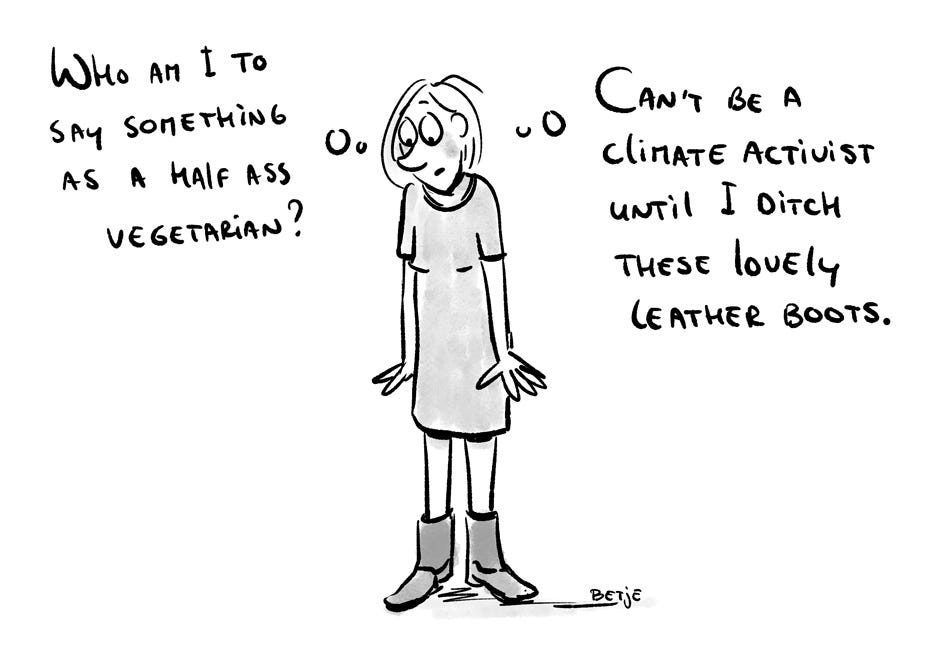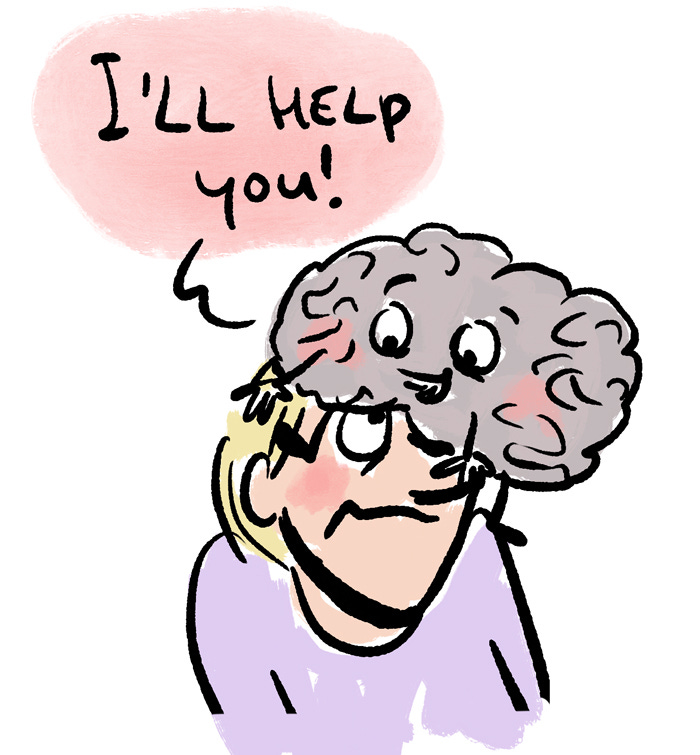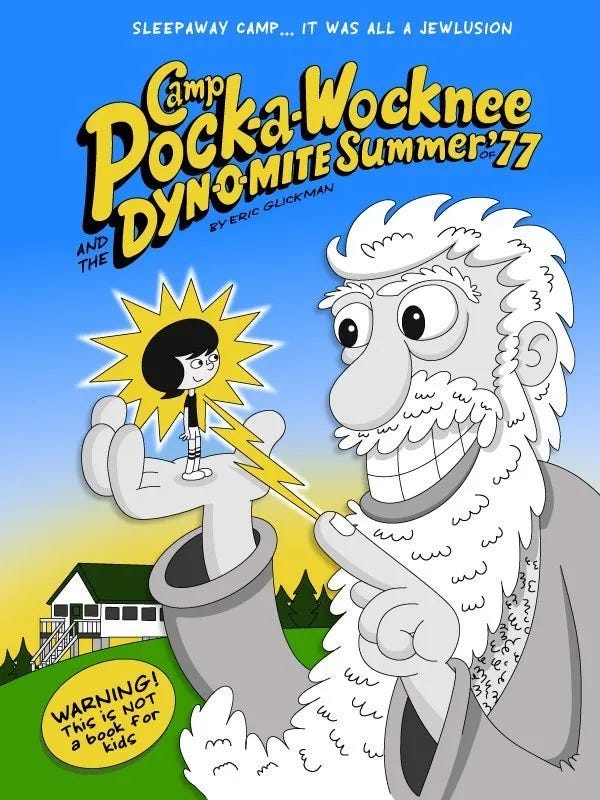Years ago, I started working on a graphic memoir. I wrote it, drew it, pitched it, lost count of the amount of rejections I received, wept and put it on the shelf. Now that I’m starting a new project, I can see how much I’ve learned in the process. I’ll share it here, because some of it could be helpful for anyone doing creative work.
This new graphic novel I’m working on is about figuring out what climate activism looks like for me. Of course, it will take a while before I get anywhere near a finished book, but I plan to share parts of it here and even more with paid subscribers.
What I learned from that book I shelved.
Simply typing away to see what comes out is a good idea. It’s called a first draft and you’re gathering your thoughts so you can shape that into a book later. Don’t just create in your head, get started, accepting that some of it will be crap.
Think about how you’re going to sell this, not because writing a bestseller should be the ultimate goal, but because knowing exactly what your work is and who it’s for, helps to find clarity.
A title helps too! I still don’t have a title that I’m thrilled about for that graphic memoir on the shelf and I think that’s because I wasn’t sure what I was trying to say. For the collection of comics I recently crowdfunded, the moment I found my title, my pitch wrote itself.
When you get stuck writing the draft, write a summary, then a chapter outline. This is like setting out a path. Still nothing is set in stone at this point, but at least you have a sense of direction. It’s easier to change direction than to have none at all.
Don’t be too afraid to print things. This took me a while, because I LOVE TREES! But having to scroll back and forth to your outline or switching tabs is too distracting. Now I have one sheet of paper with my outline that keeps me on track.
Weird little bonus tip for those who are bi-lingual. I’m writing this book in Dutch and I find that when I get stuck, I like to switch to English, then translate it back into Dutch. It helps me rethink what I wrote.
Was this helpful? Let me know!
Now that we’re talking graphic novels, just before winterbreak, I got an email from someone at Black Panel Press; an indie graphic novel publisher from Canada. They asked if I wanted to review a book for them, to which I said yes, and they sent me Camp Pock-a-Wocknee and the Dynomite Summer of ‘77.
First thing my eight year old noticed, was the little warning on the lower left corner. While the drawing style seems very suitable for kids, the warning is there for a reason. Eric Glickman recounts the favorite time of his childhood: the two months of sleep-over summer camp he attended every year. This book focusses on the summer of ‘77 , when he was fifteen and he and his bunkmates were mostly interested in making out with the girls at camp. Glickman likes to share a lot of details; from the exact schedules they followed that I found a bit boring to the - in my opinion rather disturbing - porn stories the boys read to each other before falling asleep. Along the way, you’re picking up bits and pieces of Glickman’s experience of growing up as a Jewish boy in America. I would have liked to see more of that. And then there are some stories of the silly things teenagers do that made me laugh out loud.
I find Glickman’s passion for sleep away camp delightful. It’s like when you see a kid shrieking out in pure joy while unboxing a Hot Wheels Action Epic Crash Dash Track Set - you don’t have to care about Hot Wheels to enjoy witnessing that.
I wasn’t born yet in 1977 and I don’t know most of the movies and music Glickman refers to in his book. I’ve never in my life desperately wanted to touch a boob and I don’t have fond memories of sleep away camp. Yet after reading this book, I fully understand why these camps mean so much to him. That’s exactly what I hope for in an autobio graphic novel.
With love,







If that is THE book you're talking about, I can tell you it's a great graphic novel. I still vote for The Expat Curve as a title.